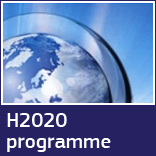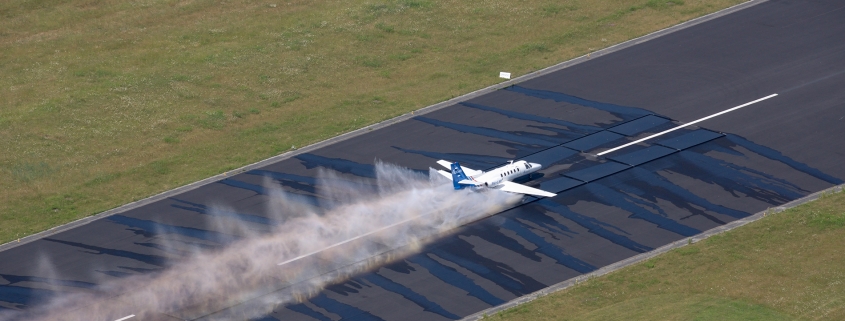Photo: Ger Nielen (NLR)
Every week an aircraft skids off a runway somewhere in the world and in about five to ten percent of all cases it is due to extreme rainfall drenching the runway. How can you avoid aquaplaning on waterlogged runways? To look for the answer NLR researchers last week headed for Twente Airport in the east of the Netherlands where they used the organisation’s Citation research plane to perform braking tests in a self-built ‘water trough’ – like a large rectangular rubber tyre placed on the runway and filled with water. The researchers were plagued by attacking beetles and the extreme heat on the black asphalt. Fortunately, some welcome cooling was provided by 76,000 litres of water that was pumped out of the nearby Twente Canal and sprayed into the water trough by the local fire brigade.
The testing followed an earlier ‘water trough trial’ conducted in 2016 and a test performed with an Airbus A400 in 2017. “Last year we carried out tests with roughly 15 to 16 millimetres of water on the runway, similar to an extreme downpour”, explained researcher Gerard van Es. “This year we used half that amount because we also wanted to find out how a landing aircraft ‘behaves’ on a runway exposed to prolonged heavy rainfall. In total we made fifteen runs through the water trough, with and without braking, at a top speed of 107 knots.”
Photo: Ger Nielen (NLR)
Tests were conducted at Twente Airport over three days. “Twente Airport has a long and wide runway and there is not too much air traffic at present”, says Van Es. “We only had to remove and replace the water trough once because of other air traffic. The airport has good facilities and the weather often tends to be just a bit calmer than in the west of the Netherlands. All in all that adds up to excellent conditions for test flights with our PH-LAB.”
NLR conducted the tests under the Future Sky Safety project, part of the EU’s Horizon 2020 programme. Reasons why NLR was chosen for this work included the Citation’s advanced braking system and modern tyres, similar to those found on a Boeing or Airbus. NLR uses the measured data to tighten up specifications for aircraft manufacturers like Airbus. The focus is on flight performance during landing, in particular on the braking system. By means of the water trough tests, NLR is helping to increase the safety of landing aircraft worldwide.

 This research was funded from the EU’s Horizon 2020 Research and Innovation Programme, but neither the report nor this press release necessarily reflects the views of the European Commission.
This research was funded from the EU’s Horizon 2020 Research and Innovation Programme, but neither the report nor this press release necessarily reflects the views of the European Commission.

 Ger Nielen (NLR)
Ger Nielen (NLR)
 NLR - Netherlands Aerospace Centre
NLR - Netherlands Aerospace Centre NLR - Netherlands Aerospace Centre
NLR - Netherlands Aerospace Centre